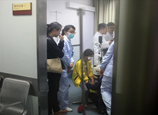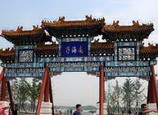
China's 7.7 percent economic growth year-on-year in the first quarter is slower than the average two-digit growth over the previous 30 years, but such deceleration is not a direct result of the international financial crisis. Instead, it is an inevitable result of the fact that a country's economy cannot maintain high-speed growth forever.
China no longer enjoys the advantages that have enabled its high-pace economic growth over the past decades. Enormous changes have taken place and it hasn't the external and internal dividends to bolster a fast-growing economy. Trade surplus has contributed much to China's gross domestic product growth over the past decades. However, it has had a negative contribution to China's GDP in the last three years. The declining advantage in labor costs and the policy of putting domestic oil prices in line with the international market have resulted in a considerable rise in China's manufacturing costs. These, together with other factors, have put a brake on the country's economic growth.
The ongoing changes in its industrial structure also make it impossible for China to maintain high-speed economic growth. After three decades of extensive economic development, production overcapacity, low added value and low technological content have become more obvious in some sectors, which, along with ever-growing environment and resources hindrances, will be a drag on the growth of their effective investment. China's industrial structural adjustment and its failure to find new effective investment demand to make up a considerable decline in its old investment demand have made an economic slowdown inevitable.
But despite the sizeable decline in its economic growth rate, China has not experienced large-scale unemployment, persuasive proof that the country's slowed economic pace conforms to economic law.


















 Developer razes historic Guangzhou structures
Developer razes historic Guangzhou structures


![]()
